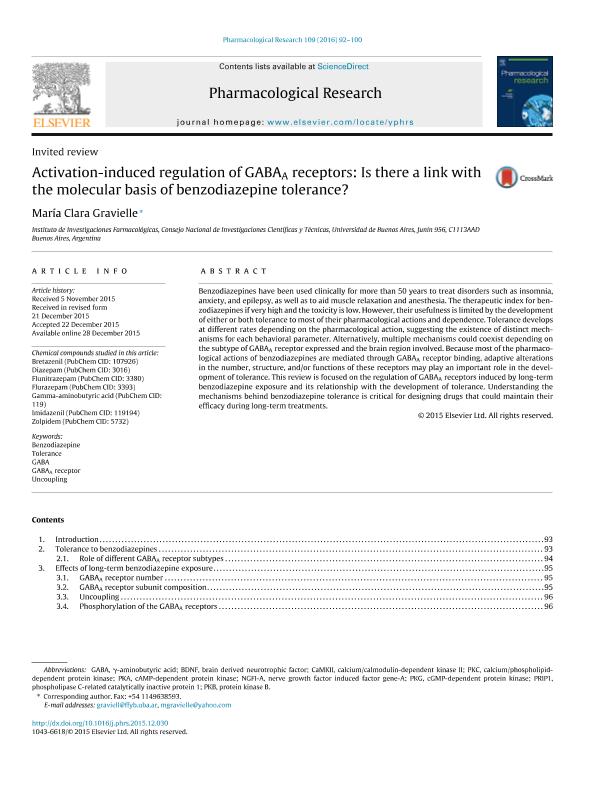Artículo
Activation-induced regulation of GABAA receptors: Is there a link with the molecular basis of benzodiazepine tolerance?
Fecha de publicación:
07/2016
Editorial:
Academic Press Ltd - Elsevier Science Ltd
Revista:
Pharmacological Research
ISSN:
1043-6618
Idioma:
Inglés
Tipo de recurso:
Artículo publicado
Clasificación temática:
Resumen
Benzodiazepines have been used clinically for more than 50 years to treat disorders such as insomnia, anxiety, and epilepsy, as well as to aid muscle relaxation and anesthesia. The therapeutic index for benzodiazepines if very high and the toxicity is low. However, their usefulness is limited by the development of either or both tolerance to most of their pharmacological actions and dependence. Tolerance develops at different rates depending on the pharmacological action, suggesting the existence of distinct mechanisms for each behavioral parameter. Alternatively, multiple mechanisms could coexist depending on the subtype of GABAA receptor expressed and the brain region involved. Because most of the pharmacological actions of benzodiazepines are mediated through GABAA receptor binding, adaptive alterations in the number, structure, and/or functions of these receptors may play an important role in the development of tolerance. This review is focused on the regulation of GABAA receptors induced by long-term benzodiazepine exposure and its relationship with the development of tolerance. Understanding the mechanisms behind benzodiazepine tolerance is critical for designing drugs that could maintain their efficacy during long-term treatments.
Palabras clave:
Benzodiazepine
,
Gaba
,
Gabaa Receptor
,
Tolerance
,
Uncoupling
Archivos asociados
Licencia
Identificadores
Colecciones
Articulos(ININFA)
Articulos de INST.DE INVEST.FARMACOLOGICAS (I)
Articulos de INST.DE INVEST.FARMACOLOGICAS (I)
Citación
Gravielle, Maria Clara; Activation-induced regulation of GABAA receptors: Is there a link with the molecular basis of benzodiazepine tolerance?; Academic Press Ltd - Elsevier Science Ltd; Pharmacological Research; 109; 7-2016; 92-100
Compartir
Altmétricas




